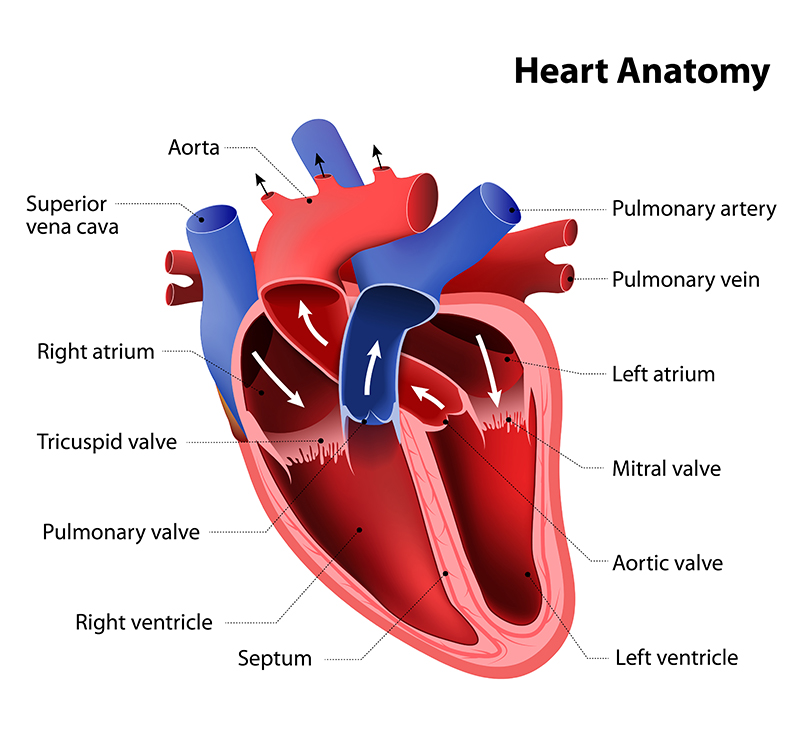Understanding the Cardiac System: Anatomy, Functions, and Heart Health Tips

The cardiac system, also known as the cardiovascular or circulatory system, is crucial for maintaining life and overall health. It consists of the heart and a network of blood vessels that transport blood, nutrients, oxygen, and waste products throughout the body. In this blog post, we’ll explore the anatomy and functions of the cardiac system, common cardiovascular conditions, and tips for maintaining heart health.
Anatomy of the Cardiac System
1. The Heart
The heart is a muscular organ located in the thoracic cavity, between the lungs. It has four chambers:
- Right Atrium: Receives deoxygenated blood from the body via the superior and inferior vena cava.
- Right Ventricle: Pumps deoxygenated blood to the lungs via the pulmonary artery for oxygenation.
- Left Atrium: Receives oxygenated blood from the lungs via the pulmonary veins.
- Left Ventricle: Pumps oxygenated blood to the body via the aorta.
The heart’s walls are made up of three layers: the endocardium (inner layer), myocardium (middle muscular layer), and epicardium (outer layer). The pericardium is a protective sac that surrounds the heart.
2. Blood Vessels
Blood vessels are the network through which blood circulates:
- Arteries: Carry oxygenated blood away from the heart to the body. The largest artery is the aorta.
- Veins: Carry deoxygenated blood back to the heart. The largest veins are the superior and inferior vena cava.
- Capillaries: Tiny blood vessels where the exchange of oxygen, nutrients, and waste products occurs between blood and tissues.
Functions of the Cardiac System
1. Circulation
The primary function of the cardiac system is to circulate blood throughout the body, delivering oxygen and nutrients to tissues and removing waste products.
2. Oxygenation
The heart pumps deoxygenated blood to the lungs, where it receives oxygen and releases carbon dioxide. This oxygenated blood is then pumped back to the body.
3. Nutrient Delivery
Blood carries essential nutrients absorbed from the digestive system to cells throughout the body.
4. Waste Removal
Blood transports metabolic waste products to organs like the kidneys and liver for excretion.
5. Regulation
The cardiac system helps regulate body temperature and maintains homeostasis by adjusting blood flow.
Common Cardiovascular Conditions
1. Hypertension (High Blood Pressure)
A condition where the force of the blood against the artery walls is too high, increasing the risk of heart disease and stroke.
2. Coronary Artery Disease (CAD)
A condition characterized by the narrowing or blockage of coronary arteries due to plaque buildup, leading to reduced blood flow to the heart muscle.
3. Heart Attack (Myocardial Infarction)
Occurs when blood flow to a part of the heart is blocked, causing damage to the heart muscle.
4. Heart Failure
A condition in which the heart cannot pump enough blood to meet the body’s needs, leading to symptoms like shortness of breath, fatigue, and fluid retention.
5. Arrhythmias
Irregular heartbeats caused by issues with the heart’s electrical system, which can lead to conditions like atrial fibrillation.
6. Stroke
Occurs when blood flow to the brain is interrupted, either by a blockage (ischemic stroke) or a burst blood vessel (hemorrhagic stroke).
Tips for Maintaining Heart Health
1. Eat a Heart-Healthy Diet
- Focus on fruits, vegetables, whole grains, lean proteins, and healthy fats.
- Limit intake of saturated fats, trans fats, sodium, and added sugars.
2. Exercise Regularly
- Aim for at least 150 minutes of moderate-intensity aerobic activity or 75 minutes of vigorous-intensity activity per week.
- Include strength training exercises at least twice a week.
3. Maintain a Healthy Weight
- Achieve and maintain a healthy weight through a balanced diet and regular physical activity.
4. Avoid Smoking and Limit Alcohol
- Smoking is a major risk factor for cardiovascular disease. Quitting smoking can significantly reduce your risk.
- Limit alcohol consumption to moderate levels (up to one drink per day for women and up to two drinks per day for men).
5. Manage Stress
- Practice stress-reducing techniques such as mindfulness, meditation, yoga, and deep breathing exercises.
6. Monitor Your Health
- Regularly check your blood pressure, cholesterol levels, and blood sugar levels.
- Visit your healthcare provider for routine check-ups and screenings.
7. Get Enough Sleep
- Aim for 7-9 hours of quality sleep per night to support overall cardiovascular health.
Conclusion
The cardiac system is essential for maintaining life and supporting overall health. Understanding its anatomy and functions can help you appreciate its importance and take proactive steps to maintain heart health. By adopting a heart-healthy lifestyle, including a balanced diet, regular exercise, and stress management, you can reduce your risk of cardiovascular disease and promote long-term well-being. Remember to consult with your healthcare provider for personalized advice and recommendations.






